Jowar, or sorghum, is dry land’s most important food and fodder crop. Having corn-like leaves and bearing grain in a compact cluster, cereal crops like Jowar are perennial crops. Among the world’s cereal crops, Jowar ranks fifth after wheat, rice, maize, and barley. Arid and semi-arid regions of the world have a wide variety of this plant because of its drought tolerance.
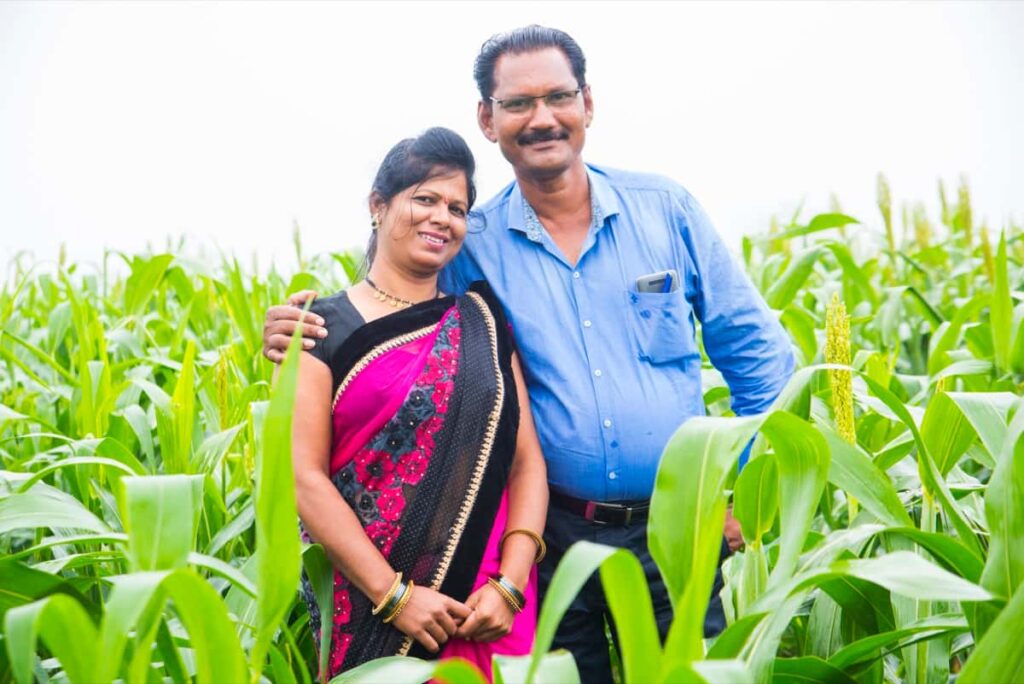
One of the most important staple food grains in India is Jowar. Maharashtra cultivates 50% of the total area under Jowar cultivation in India. Among the total Jowar production in the country, 52% is produced in Maharashtra, Karnataka, Andhra Pradesh, and Tamil Nadu. Besides being able to be grown both in Kharif and Rabi, this crop is very versatile.
Growing Jowar (Sorghum) organically in Maharashtra
How does the Maharashtra government support organic farming
Maharashtra’s state government launched a policy for organic farming. Using local natural resources for farming and rejecting chemicals is what organic farming is defined as in the policy. In this scheme, farmers are encouraged to use organic inputs to improve soil fertility, certify organic agricultural areas, sell organic products, brand organic agricultural products, and promote organic agriculture.
Benefits of state organic farming policy
- To get the benefits of low-cost organic farming
- To get the benefits of saving money in organic farming
- To get the benefits of nullifying the use of fertilizers and pesticides
- To get benefits of subsidy in organic farming
- To get benefits of organic farming economically and ecologically
The Maharashtra government is also promoting the production of organic crops, fruits, vegetables, etc., through various central government schemes viz Indian Council of Agricultural Research (ICAR), National Project on Organic Farming (NPOF), Rashtriya Krishi Vikas Yojana (RKVY), National Horticulture Mission (NHM), etc.
In case you missed it: Sorghum Farming in Indonesia: Step-By-Step Cultivation and Production Management
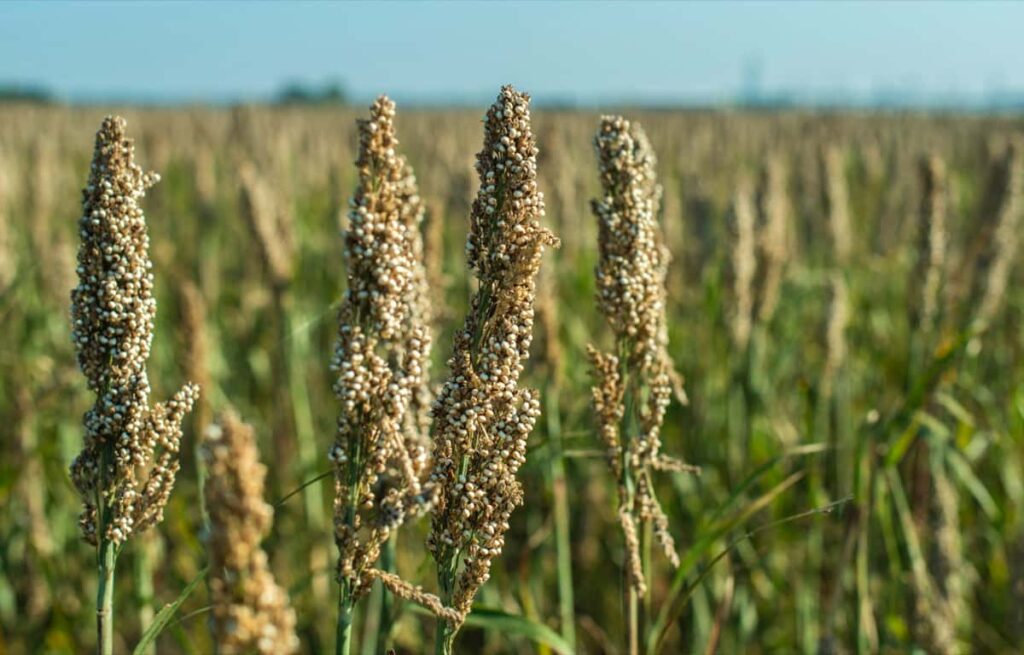
Climate required for Jowar cultivation
In warm climates, Jowar can be grown under various climatic conditions. The crop is grown from sea level to an altitude of 3,000 m in semi-arid tropics with variable rainfall. A cereal crop like Jowar is better adapted to high temperatures and dry conditions than any other due to its ability to absorb moisture from deeper soil layers. Additionally, its waxy leaf surface, small leaf area, and ability to curl leaves reduce transpirational water loss.
Seeds of sorghum must be germinated at a temperature of 7-10°C to germinate. For optimal growth, it needs temperatures between 25 and 30°C. Despite its ability to withstand temperatures up to 45°C, the lower temperatures (7°C) limit its cultivation owing to limited flowering and pollination. As a result, its rabi cultivation is restricted in north India. At the blooming stage, temperatures below 13°C are detrimental to seed germination. Growing it successfully is possible in areas with an average annual rainfall of 40 to 100 cm.
Soil required for Jowar cultivation
Generally, Jowar can be grown on all types of soils, but sorghum soils in India can be divided into Alfisols (red) and Vertisols (black). Sandier soils are not conducive to their growth. The best soils have high organic matter content and good water retention capacity. A pH range of 6.0 to 8.5 is ideal for the cultivation of this crop. The black cotton soils of central India with proper drainage are considered the best soils for growing cotton.
Water logging is a major problem in vertisols with a high clay content during the Kharif season. An average rainfed rabi crop is successful on vertisols with 90-120mm of stored soil moisture. However, it is necessary to irrigate or shower during the winter when the soil has a low water retention capacity.
Field preparation for Jowar cultivation
Jowar crop requires a well-prepared seedbed for good stand establishment. The cloddy seedbed leads to an uneven stand. Fine and firm fields improve germination, soil aeration, root development, water absorption by roots, and soil water intake. With the onset of the monsoon, the field is prepared by one deep plowing followed by 2-3 harrowing or plowing with a country plow. Planking should be performed after each plowing to break the clods and level the field. Leveling is necessary to facilitate easy drainage in heavy soils prone to water logging.
Sowing time of Jowar
Jowar is sown three times a year. Kharif is the time of sowing, while summer is the time of sowing in the north. It can be grown in Kharif, Rabi, and during the south and west summers. The onset of monsoons solely determines sowing time in Kharif under rainfed conditions. It is important to sow sorghum at the right time to maximize yield. Sowing time is determined by soil moisture, temperature, and shoot fly activity. Dry sowing just before monsoon onset is also reported to be the best.
In case you missed it: The Benefits of Incorporating Organic Practices in Vegetable Cultivation
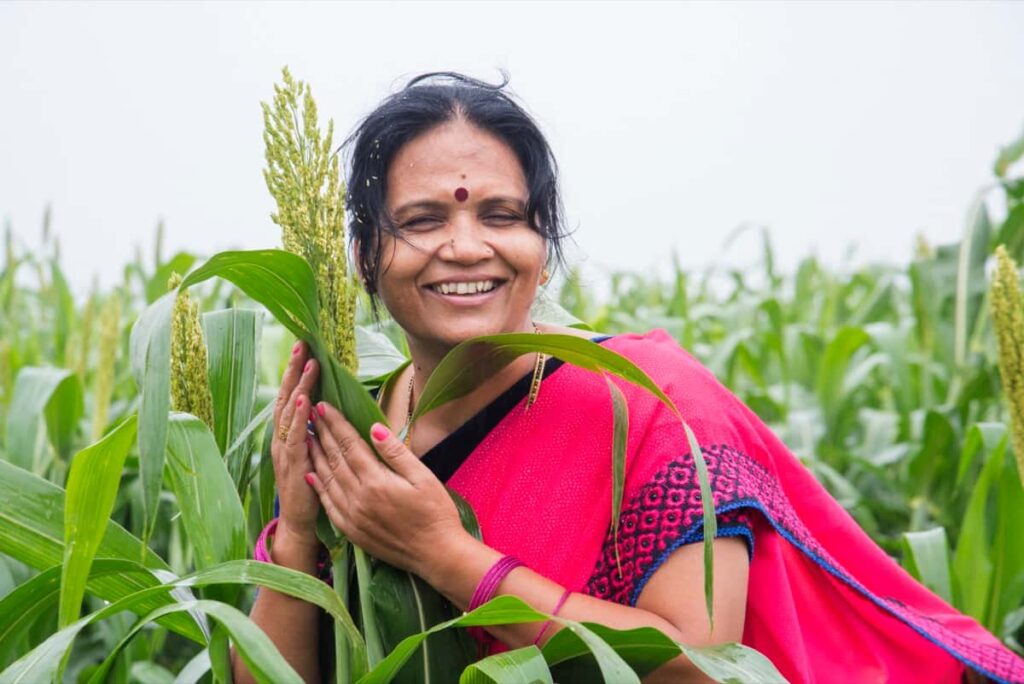
Ideally, crops should be established before the onset of monsoon in irrigated conditions. It is, therefore, advisable to sow 1-2 weeks before monsoon. Shot flies will be less likely to damage the crop by sowing early, and there will be fewer crop losses. As opposed to that, extra early or delayed sowings cause grain mold or moisture stress when the flowering time coincides with rains.
Seed rate and spacing
It is mainly determined by the cultivars’ stature and duration that determine the seed rate. Moisture availability, soil fertility status, and variety vigor all play a role in determining sorghum density in any growing region. For optimum plant populations, seed rate, planting geometry, and the number of plants per unit area must be considered.
Seed is generally applied at a rate of 7-8 kg per acre. This provides 2 lakh plants per acre, with an allowance of 10% loss due to poor germination or pest damage. Rainfed rabi crops, however, have a lower population, i.e., 1,35,000 plants/ha, about 14 plants/m2. It was possible to achieve higher yields with 1.80 lakh plants under conditions of assured soil moisture. Consequently, rows should be spaced 40 or 60 cm apart in Rabi as long as the population is sufficient.
Jowar seed treatment
The seed should be treated before planting to prevent seed-borne diseases and soil pests that were common in the field in earlier years. The following are a few seed treatment practices,
- Dry the seed in the shade to the original moisture level.
- A salt solution of 30% is used to soak the seeds (3 kg of salt in 10 liters of water).
- Treat the seeds with three packets of Azospirillum (600 grams) and Phosphobacterium to enhance nitrogen and phosphorus availability.
Method of Jowar sowing
Sowing seeds is carried manually behind a plow using pora by broadcasting seeds. Broadcasting needs to be done with a higher seed rate for optimum plant stand in the field since germination may not be uniform. The country seed drill used for line sowing is a pora, a wooden hopper attached to a hollow bamboo stem. Country plow tines open shallow furrows in which seeds are sown.
Row sowing is common in black cotton soils. Sorghum is a tall growing crop. To avoid mutual shading, rows must face the sun (sunrise and sunset directions) so that sunlight can penetrate even to the lower leaves, improving photosynthesis and carbohydrate production. The paired row planting pattern is promising in rainfed conditions. A paired row planting system includes 30/60 cm and 45/90 cm rows. In areas with low rainfall, ridge and furrow systems are beneficial for sowing sorghum.
Manures required for Jowar cultivation
Fertilizer is essential when cultivating high-yielding varieties and hybrids to maximize their yield potential. As a nutrient-exhaustive crop, sorghum is difficult to grow. Fertilizers made from organic and mineral sources are effective on it. Soil fertility, moisture availability, and varieties to be grown influence fertilizer application rates for sorghum.
In case you missed it: Growing Potatoes Organically in Telangana: Step-by-Step Cultivation and Production
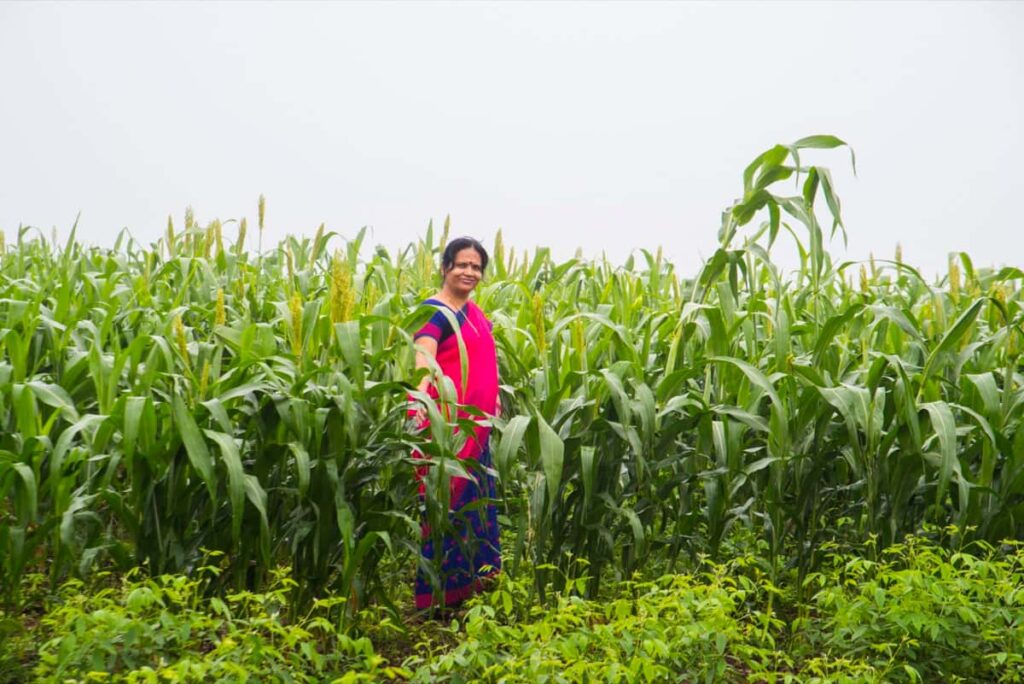
The recommended fertilizer application should be followed if soil test results are unavailable. During the last plowing of rain-fed crops, 2.5-4 tons of Farm Yard Manure (FYM) must be applied and properly incorporated. During irrigated cultivation, the dose of FYM or compost must be doubled, i.e., 5-8 tons/acre for hybrids and high-yielding varieties. Azospirillum, a bio-fertilizer, should be mixed with 10 kg of FYM and soil at 800 grams per acre at the final plowing or planting.
Water management for Jowar cultivation
Jowar is predominantly grown as a rainfed crop in Kharif and on conserved moisture in Rabi. It is a drought-tolerant crop because of its extensive and deep root system capable of extracting moisture soil moisture from deeper soil layers. Moreover, maintaining optimum soil moisture at 20-25 DAS helps develop strong secondary roots. In general, the water requirement of sorghum varies from 300-500 mm (Kharif and Rabi) to 600-700 mm (summer).
Depending upon the availability of water resources for irrigation, Jowar is provided with protective irrigation in Kharif and is grown as an irrigated crop in Rabi. There are four critical stages of irrigation, i.e., primordial flower initiation (25-30 DAS), flag leaf stage (50-55 DAS), flowering (60-70 DAS), and grain filling (80-90 DAS).
Weed management for Jowar cultivation
Weeds simultaneously germinate in the crop sown under Kharif rainfed conditions and cause severe competition with the crop. The initial 30-45 days after sowing is the critical period of crop-weed competition. Therefore, the crop should be kept weed free during this period. This is achieved by manual weeding and hoeing in Rabi and Zaid seasons. During the Kharif season, intermittent rains may not permit weeding and hoeing. Weeds may cause a 20-60% reduction in yield if not controlled at the right time.
Common pests in Jowar crop and their organic control
Sorghum stem borer
- Damage symptoms: Damage occurs as a series of small holes in lines (pinholes) in younger leaves. Holes in the stem caused by larvae tunneling into the stem can result in broken stems or drying and eventual death of the growing point.
- Control methods: Select and grow varieties resistant to spotted stem borer. Sowing the lablab, cowpea, or pigeon pea as an intercrop (Sorghum: Lablab 4:1) reduces the damage by stem borers.
Sorghum midge
- Damage symptoms: In the mature crop, damaged spikelets become empty or chaffy, and the sorghum panicles present a blasted appearance. Damaged panicles have small, transparent midge pupal cases attached to the tip of the damaged spikelets.
- Control methods: Set up light traps till midnight to monitor, attract and kill adults of stem borer, grain midge, and earhead caterpillars. Spray Neem seed kernel extract 5%
White grub
- Damage symptoms: Yellowing and wilting of leaves. Drying of the entire crown. The affected stem comes off easily when pulled. Cause extensive damage to roots and base of the shoot.
- Control methods: Collection and destruction of stubbles after the harvest of the crop to kill hibernating larvae. Increase the seed rate to compensate for the loss. Follow proper crop rotation (with non-host crop) and use light traps.
In case you missed it: Growing Coriander Organically in Madhya Pradesh: Cultivation and Production Management

Common diseases in Jowar crop and their organic control
Sorghum charcoal rot
- Disease symptoms: At and above the ground line, infected stalks show internal shredding. If the stalk is split and the deteriorated pith tissue is molted off, the tougher vascular strands can be seen shredding.
- Control methods: Plant varieties with good stalk strength. Plant in fertile soil. Avoid high plant populations unless irrigating. Rotate with cotton.
Loose smut
- Disease symptoms: Plants that are affected can be detected before their ears emerge. In addition to being shorter than healthy plants, they also have thinner stalks and marked tillering. Moreover, the sorus is covered by a thin membrane that ruptures very early, exposing the spores even before the head emerges.
- Control methods: Collect smutted ear-heads in cloth bags and destroy them by dipping them in boiling water or bury in the soil. Avoid ratooning.
Rust
- Disease symptoms: The first symptoms are small dots on the lower leaves. Pustules appear on both leaf surfaces as purplish spots, which rupture to release reddish powdery masses of uredospores. The pustules may also occur on the leaf sheaths and the stalks of inflorescence.
- Control methods: Rotate sorghum with non-susceptible crops. Avoid planting varieties that are highly susceptible to rust.
Harvesting Jowar crop
The crop should be harvested immediately after maturity to minimize the losses due to birds, insects, mold, and bad weather. Generally, two harvesting methods are adopted, i.e., stalk cut and cutting earheads by sickles. In the case of the stalk-cut method, the plants are cut from near the ground level. Then, the stalks are tied into bundles of convenient sizes and stacked on the threshing floor. After 2- 3 days, the earheads are removed from the plants.
In other methods, earheads only are removed from the standing crop and collected at the threshing floor for threshing after 3-4 days of sun-drying. The standing stalks, depending on convenience, will be cut at ground level for feeding the cattle. Harvested ear heads are dried in the sun for 1-2 days or until the grain moisture content drops to 12 percent.
By beating them with sticks or trampling them under a bullock’s feet, earheads are threshed. A majority of farmers prefer this method because it is faster. It is also possible to thresh with the help of threshers. For safe storage, threshed grain should be cleaned by winnowing and dried in the sun for 6-7 days to reduce the moisture content to 12-13 %.
In case you missed it: Growing Pineapple Organically in West Bengal: Farming Practices and Production Guide
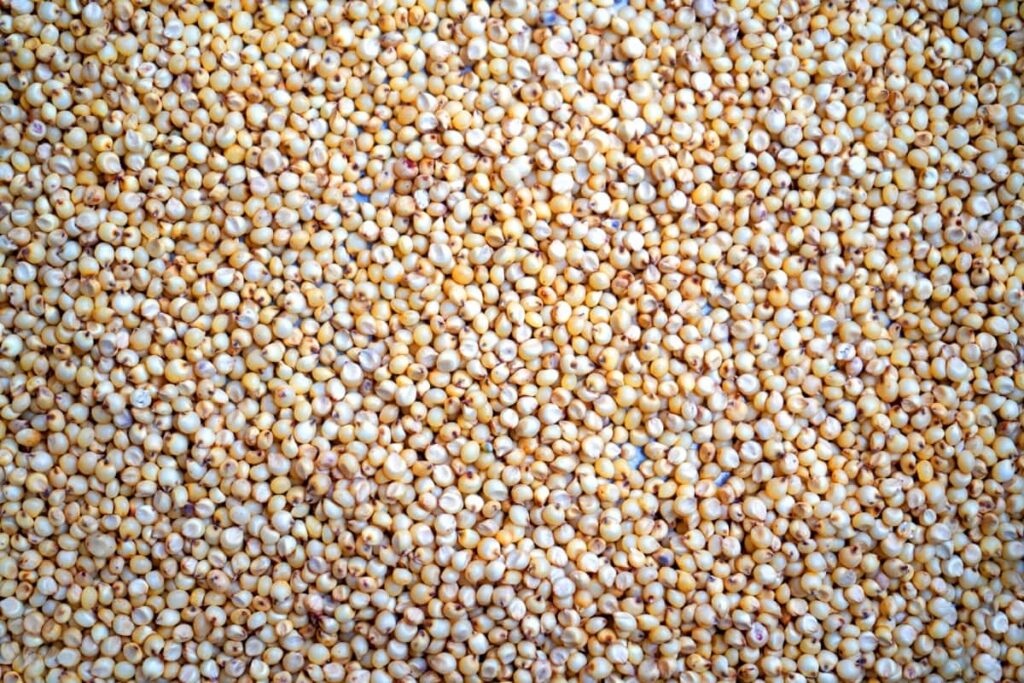
Yield in Jowar crop grown organically
The grain yield of improved varieties under assured water supply ranges between 10-14 quintals per acre. With improved cultural practices, harvesting about 20 quintals of grain under irrigated conditions can be achieved.
Conclusion
The nutritional value of Jowar is the same as that of corn, which is why it is gaining importance as livestock feed. However, Jowar is also used for ethanol production, grain alcohol, starch production, and the production of adhesives and paper other than food and feed for livestock. Jowar cultivation is gaining popularity due to its nature of extreme drought tolerance.
- Budget Friendly Sheep Shed Ideas: Cheap and Low-Cost Tips
- How Much Do Cattle Farmers Make: Revenue Streams in Cattle Farming
- Management Pests and Diseases in Your Cotton Field
- Sheep Farming Business Plan for Beginners
- Aquaponic Farming at Home: A Step-By-Step Guide
- Profitable Village Farming Business Ideas in 2024
- High-Yield Aquaculture: Fast-Growing Fish for Farming
- Effective Fish Pond Construction Techniques for Beginners
- Irrigation and Water Management in Pineapple Farming
- Blossom to Harvest: Mastering Flowering and Pollination in Papaya Farming
- Pig Fattening Essentials: From Selection to Sale for Beginners
- Raising Wagyu Cattle: A Complete Guide for Premium Beef Production
- Soil Types and Their Water Holding Capacity
- Optimizing Irrigation Schedules for Coconut Groves for Enhanced Yield
- Espresso Your Garden: Coffee Grounds for Healthier Acid-Loving Plants
- The Best Soil Mix for Snake Plants: How to Mix Your Own Snake Plant Soil
- Green Thumb Success: Expert Tips for Cultivating Greenhouse Beans All Year Round
- Bloom All Year Round: The Ultimate Guide to Indoor Hyacinth Care
- Eco-Friendly Gardening: How to Make Liquid Fertilizer from Kitchen Waste
- Ultimate Guide to Grow Anise in Pots: Explore Seed Propagation to Harvesting
- Guide to Raising Chester White Pigs: Discover Breed Facts to Growth Management
- Mastering the Elegance: The Ultimate Guide to Weeping Cherry Tree Care, Planting, and Maintenance
- Ultimate Guide to Planting Garlic in Grow Bags: Growing Strategies for Beginners
- How to Fix Spider Plant Leaf-Related Problems: Natural and Organic Remedies
- 10 Reasons Why Your Tulsi Plant is Shedding Leaves: Home Remedies and Solutions
- Optimizing Growth and Yield: The Advantages of Palm Bunch Ash Fertilizer
- Utilizing Neem Oil Extract as a Natural Pesticide for Hydrangea
- From Soil to Harvest: Various Ways in Which Farmers Can Use AI Tools
- Steps to Encourage and Induce Citrus Flowers: A Comprehensive Guide
- How to Fix Snake Plant Leaf-Related Issues: Natural and Organic Remedies
- Transform Your Garden into a Fragrant Oasis with Raat Ki Rani (Night Blooming Jasmine)
- Discover the Ideal Chicken Breeds for Philippine Farms
- How to Create a Poultry Egg Farm Business Plan for Profits
- Grow Lemon Cucumbers Like a Pro: Insider Techniques for Bountiful Yields
- Ultimate Guide to Caring for Your Pink Princess Philodendron: Tips for Thriving Variegation
- Areca Nut Profit Per Acre: Calculating Yield and Cost of Cultivation
